Sunset era hydroaviation
The origins of marine aircraft
Taganrog Aviation Science and Technology Complex. Beriev leads his history from 1934, when the Central Design Bureau (CDB) of naval aircraft manufacturing was established in Taganrog at the aircraft factory No. 31. The first task was the organization of the production of the marine neighbor intelligence officer - the flying boat MBR-2, developed in 1932 by G. M. Beriev (1903 – 1979). As a result, Beriev was appointed chief designer of this Central Design Bureau. Prior to that, he worked as brigade chief No. 5 (sea planes) of the Central Design Bureau at aircraft factory No. 39. This bureau was organized in 1933 and was headed by S. V. Ilyushin.
MBR-2
After the war, under the leadership of Beriev, for the Navy of the USSR, a new multipurpose flying boat Be-6 was developed, which made its first flight in 1948 year and was produced at plant No. 86 in 1952 – 1957 years (123 aircraft). However, the main activity of the OKB was the creation of a seaplane with a jet engine. An experimental jet flying boat P-1952 was created in 1, and by the end of 50 they managed to develop the world's first serial jet seaplane, called the Be-10. In 1958 – 1961, 86 built 27 of such flying boats in the version of a torpedo bomber. The Be-10 has set 12 world records.
Be-6
Be-10
In 1967, Experimental Plant No. 49 was renamed to Taganrog Machine-Building Plant (TMZ), and the serial plant No. 86 was assigned to Taganrog Mechanical Plant named after N. Semenov. Dmitrov. In 1968, Beriev retired and AK Konstantinov was appointed new chief designer of the TMZ.
In October 1989, the TMZ was named the Taganrog Scientific and Technical Complex (TANTK), and in December of the same year, the plant was named after its founder, G. M. Beriev. In turn, the Taganrog Mechanical Plant. Dmitrov renamed Taganrog Aviation Production Enterprise them. Dmitrov.
“The only real product of the TANTK in its area of expertise is the Be-200. However, a large number of people who want to buy it is not visible
In the 70-s, funding for research and development on hydroaviation in the USSR was greatly reduced. At that time, the Taganrog Machine-Building Plant conducted research and development on anti-submarine deck and land-based aircraft. In 1977, with the assistance of TMZ, a Tu-142МР relay aircraft was created, and in 1978, an early-warning radar (DRLO) aircraft and A-50 controls (based on IL-76) were created. At the same time, in the latter case, TMZ was the lead contractor and integrator of the project (the Il-76 aircraft were built in Tashkent, the developer of the main radio engineering complex for them with the Shmel radar was NPO Vega). All in 80-e at Taganrog Mechanical Plant them. Dmitrova released 25 A-50. In Soviet times, TMZ also began work on an aviation combat laser system under the code A-60 (two experimental aircraft were made based on the IL-76).
However, the amphibious theme was not completely collapsed. In 1973, in the interests of the Soviet Navy, the development of a new anti-submarine seaplane with jet engines to replace the Be-12 began. In 1986, the machine under the designation A-40 "Albatross" made the first flight. This maximum take-off 90 aircraft became the largest amphibious jet aircraft in the world. In 1995, as a result of the cessation of state funding, tests of A-40 were suspended, by which time only two prototypes had been built. Resume the program in a revised form and under the symbol A-42 decided only in 2007 year.
B-12
In parallel with the development of the A-40, TMZ was developing a similar concept, but more compact multi-purpose amphibious aircraft A-200 with a take-off weight of 40 tons. Its production was planned to be organized at the Irkutsk Aviation Production Association (IAPO). In 1990, a preliminary design was prepared, but the prototype's first flight took place only in 1998. The aircraft was renamed Be-200 and in the post-Soviet period it became the basis for cooperation between the Taganrog enterprise and the Irkut corporation, created after the collapse of the USSR based on IAPO.
A-40
In 2006, the state-owned United Aircraft Building Corporation (UAC) was established, uniting all key enterprises of the industry, including NPK Irkut and OJSC Tupolev. As a result, TANTK them. Beriev and Tavia (Taganrog Aviation OJSC) were under the complete control of the state, although with respect to the TANTK the formal shareholder structure remained the same.
After the creation of the KLA, Alexey Fedorov, who became the head of the corporation, realized his previous intention and lobbied the decision to move the production of Be-200 from Irkutsk to Taganrog. The relocation of production should be completed by 2013, 4,8 is planned to spend a billion rubles for this purpose.
Today TANTK them. Beriev is part of the UAC Special Aviation Division, which, in addition to hydroaviation, will be engaged in the creation of strategic and long-range Tupolev bombers and special aircraft based on Tu-214 and Il-76. Based on the priorities, OAO Tupolev was chosen as the base enterprise of the division. Nevertheless, despite the secondary role in the division of the TANTK them. Beriev, this is the OKB, together with its Tavia production plant, is determined by the UAC center for hydroamphibious aviation.
Heads TANTK and Tavia Viktor Kobzev, who previously held the position of head of CJSC Beta-IR, a joint venture of IAPO, TANTK and Tavia, created in 1990 for the implementation of the Be-200 program (Irkut now controls ).
The main program
Be-200
The first customer of the Be-200 was the Ministry of Emergency Situations of the Russian Federation. In accordance with the contract signed in January 1997, the Emergencies Ministry ordered seven aircraft in the variant Be-200ES (can be used as search and rescue, fire and transport), the first of which was built in 2003-m. However, in reality, by 2006, the ministry received only four production aircraft (101, 102, 201 and 202 serial numbers) and further seemed to lose interest in the Be-200. The fifth aircraft built for the Emergencies Ministry of the Russian Federation (203 serial number) in April 2008 was sold to the Emergencies Ministry of Azerbaijan. The construction of the remaining two cars slowed down, and the sixth aircraft (serial number 301) made its first flight in Irkutsk only in July 2010. The seventh Be-200ChS (302 serial number) should be completed in 2011, while the 101 headboard was decommissioned and sent to the TANTK for repair in 2008, where it remains until now.
The situation with the internal order for the Be-200 changed due to the large number of forest fires in Russia in July-August last year due to the anomalously hot summer. As a result of the events, the Russian government decided to procure eight more Be-200ES for the Ministry of Emergency Situations. The delivery of the first two aircraft from the Irkut reserve is expected in 2011, the remaining six will be built by Tavia and delivered in two batches of three aircraft in 2012 and 2013. In this case, the cost of eight machines ordered - 12 billion rubles.
At the same time, the Russian side continues marketing the Be-200 on the world market, promoting it mainly in the fire fighting variant, however, in view of the high cost, the chances of contracting are unlikely. Foreign countries prefer not to buy the Be-200 for final use, but to rent it for solving urgent problems. At various times, the Emergencies Ministry aircraft were used to extinguish fires in Italy (2004 – 2005), Portugal (2006 – 2007), Indonesia (2006), Greece (2007), Israel (2010). The only foreign buyer of the Be-200 is still the Emergencies Ministry of Azerbaijan, which received the above-mentioned 203 board in 2008.
Be-200
Offers of the Be-200 aircraft in cargo, medical, administrative, passenger (Be-210), search and rescue (Be-200PS), anti-submarine (Be-200П), patrol (Be-200MP, Be-220) and other variants found customers.
In May, the Indian Navy 2010 requested information (RfP) on the availability of six Be-200. Delhi plans to use them as a patrol and search and rescue, deploying in the Andaman and Nicobar Islands. Bombardier 415 and Dornier Seastar aircraft are also likely to take part in the tender.
Aircraft based on the Be-200
For most modifications of the Be-200 (with the exception of the fire-fighting version), amphibiousness seems to be a dubious advantage, which only complicates the car and worsens its aerodynamic and weight characteristics. Therefore, the TANTK’s projects to create land-based variants with the Be-200, replacing the “boat” fuselage with a conventional one (aircraft type), became quite logical. It is known that the TANTK is currently working on two “ground” variants of the Be-200 - the DRLO aircraft and the Be-250 controls (for the promising radar system developed by the Vega concern) and the Be-300 aircraft in the patrol and anti-submarine Be-300MP variants ( with the installation of a promising search and aiming system "Kasatka" developed by JSC "Radar-MMS"). "Killer whale" is also offered for the new patrol version of the amphibian Be-200 under the designation Be-200MP.
A-50
In 1978, the DRLO and A-50 control aircraft were created with the leading role of TANTK. The task of the Beriev Design Bureau included the integration of the complex and the adaptation of the Il-76 military transport aircraft to accommodate the Bumblebee radio engineering complex developed by Vega. In 1978 – 1983, three prototypes A-50 (product A) were converted in Taganrog. Serial production of A-50 was carried out in Tashkent with the installation of a radar complex in Taganrog from 1984 to 1990 year (total 25 serial machines were built).
Since 1984, the development of the modified A-50M aircraft with the Bumblebee-2 radar complex and PS-90А-76 engines was in progress, but in 1990 the work was stopped and the prototype remained unfinished in Tashkent.
In 1997, the company “Rosvooruzhenie” (now Rosoboronexport) and the Israeli corporation IAI signed an agreement on the creation of an AEW aircraft and control A-50I. An Israeli IAI Phalcon radar system with EL / M-2075 radar with phased antenna arrays was installed on the vehicle. The customer was China, which ordered four aircraft worth $ 1 billion in 1997. By 2000, work on the first machine was completed by refitting one of the former A-50 serials, but the US demanded that Israel stop cooperating with China. In 2001, the Phalcon complex was dismantled from the converted A-50I, and the empty side in 2002 was handed over to the People's Republic of China, where it later served as a platform for creating its own DRLO KJ-2000 aircraft.
The first real owner of the Russian-Israeli aircraft was India. In 2003, a contract worth 1,1 billion dollars was signed for the supply of Delhi three A-50AIs with an IAI Phalcon radar system and PS-90А-76 engines. According to him, the first car was planned to be delivered in the 2006 year, and the last one - in the 2009, however the contract is being implemented with serious delays. The first aircraft was sent from TANTK to Israel to install the radar complex in January 2008, and transferred to the Indian Air Force in complete form only in May 2009. The second Indians received in March 2010. The third board was relocated from TANTK to Israel in October of 2010 and is expected to be delivered to the customer in 2011. In Delhi, intend to implement the option for three additional aircraft.
Meanwhile, the modernization of the combatant A-50 of the Russian Air Force began. TANTK them. Beriev and the concern “Vega” have successfully completed the modification A-50U with a modernized radio engineering complex. At the end of 2009, the act of completing the state joint tests of this machine was signed. In 2010, the modernization of the A-50U version of the first A-50 Air Force of the Russian Air Force was completed and work began on another board. In total, the RF Air Force is currently operating X-NUMX A-12 aircraft.
In parallel, TANTK together with the concern "Vega" is building an ARLO aircraft and A-100 control with a new-generation radar complex designed to replace A-50. The platform for the new machine should be the same IL-76TD, and in the future - and IL-476 mastered in Voronezh. In August, 2010, the general director of the concern “Vega” Vladimir Verba stated that “in three or four years we will receive the newest complex on the same carrier (IL-76)”.
Be-103
At the start of the 90-x, TANTK began to design a lightweight six-seater multipurpose reciprocating amphibious aircraft, the Be-103. The first flight of the car took place in 1997. In addition to Russia, the Be-103 from 2003 to 2008 was certified in the USA, China, Brazil and the European Union. On KnAAPO them. Gagarin (part of the Sukhoi AHK) a series production line was launched. It was believed that the Be-103 has good market prospects. However, in reality, from 1997 to 2005, only ten prototype and production aircraft for Russian customers were built in the year, three of which crashed. Three more cars were delivered in the 2003 year in the United States, since then they have been resold several times.
Great hopes were associated with the promotion of Be-103 in China. In 2003, an agreement was reached for the supply of 20 Be-103 to China with an option for 10 machines. The question of organizing the licensed production of the Be-103 in China (in Huzhou) was also considered, the volume of which was estimated at least in 50 machines. However, in the Chinese direction, the Be-103 failed. Although in the 2003 – 2007 years, KnAAPO built all the 20 planes of the Chinese order and laid the 10 on the option, in reality, only two planes were delivered to the People’s Republic of China in the autumn of the 2010 of China Flying Dragon Airlines from Tianjin. The Chinese side seems to have refused to accept the remaining aircraft, and these 18 Be-103 remain mothballed at KnAAPO. With a cost of about one million dollars and the emerged increased accident rate, the Be-103 is clearly uncompetitive. To date, the program is actually terminated.
EKRONOLETS and other projects
According to the TANTK, one of the promising areas is the creation of super-heavy amphibians, an EFC, an take-off mass of 2500 tons. Similar studies began in the USSR in 80-s. Now TANTK together with TsAGI continues to develop this theme, about which Kobzev once again reported during Gidroaviasalon-2010. The advantage of an Ekstraolot should be high economy and high payload. The creators see their main purpose in transoceanic container shipments. Screenshots do not require any special infrastructure, they can be operated using the capabilities of existing seaports. According to Kobzev, it will take from 15 to 20 years and more than 10 billion dollars to implement the project. However, it is doubtful that such funds will be found, especially since the economic feasibility has yet to be proved.
Simultaneously, Beriev Aircraft Company continues to promote stretching since 90-ies projects a series of amphibious aircraft - four light piston Baie-101 (takeoff weight of up to 1,5 tons), twin-engine turboprop Be-112 (11 tons) and Be-114 (22 tons) and corporate amphibious Be-170. The possibility of bringing all these programs to practical implementation is unlikely.
Unpromising directions
TANTK them. Beriev remains the only significant aviation design bureau in the world specializing in the field of hydroaviation, promoting its "unique competence" in this area. Meanwhile, it is obvious that the era of hydroaviation is becoming a thing of the past. Large seaplanes remained only a very narrow niche of fire-fighting and search and rescue vehicles, and the real need for seaplanes, even in this niche, is in doubt. Light engine hydroaviation retains a certain value, but here the demand is satisfied by the float options of the usual "land" light-engine machines, good, in operation, easy replacement of the wheel chassis to the float and back is possible. There is no urgent need for specialized light-engine amphibians, whose flight characteristics are obviously worse than ground-based aircraft, and such amphibians are now small-scale exotic products for enthusiasts.
In the light of this, the persistent adherence of the TANTK to hydroaviation condemns this company to a marginal position and leads to the waste of funds on obviously unrealizable projects. It seems that there is not and will not be any market demand for the amphibious projects currently being developed by the TANTK (Be-101, Be-112, Be-114, Be-170), not to mention frankly fantastic EKR projects. Attempts to reanimate the А-40 / 42 aircraft also have no obvious significant prospects, and the idea of organizing the construction for the Russian Navy of only a few copies of the heavy and expensive А-42 looks very dubious from an economic and operational point of view and is likely to be revised by government agencies after an objective analysis.
The only real product of the TANTK in its area of expertise is the Be-200. However, a special number of those who want to buy it is not visible and even the pilot customer (EMERCOM of Russia) before the 2010 summer fires clearly did not show much interest in this aircraft. The real prospects for the continued production of the Be-200 depend mainly on how long the state will continue such acts of charity against the KLA and the TANTK at the expense of taxpayers.
The futility of seaplane specialization OKB im. Beriev was already obvious by the 70 years, and the decision of the leadership of the Soviet aviation industry of that time to re-engineer the bureau in the direction of work on "special ground" aviation should be considered completely justified. Amphibian projects A-40, Be-200 and Be-103 did not bring any benefit either to TANTK or to the state as a whole, becoming costly relapses that clearly demonstrated the deadlock of this topic. As a result, and now, as can be judged, the main income of the TANTK is not from participation in the production of Be-200 pieces, but from the implementation of A-50 EI, A-50U, A-60, R & D programs on new AEW aircraft and other special machines, works on the Tu-142 family of aircraft, etc. The Be-250 and Be-300 projects look very attractive, the latter being able to become virtually the only alternative for the promising base patrol and anti-submarine aircraft for both the Russian Navy and for export.
TANTK them. Beriev can have a long-term future only if the UAC leadership brings to the logical end the conversion of the Taganrog complex begun in Soviet times to the creation of special-purpose aviation systems (fully focusing on this subject, including the transfer of specialized topics from other Russian design bureaus). Obviously, this will require at the same time a more solid approach to the topics of promising work of the TANTK, including the cessation of the dispersion of resources into unrealistic hydro-aviation projects.
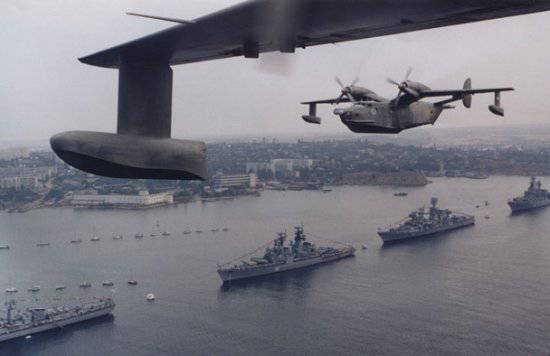
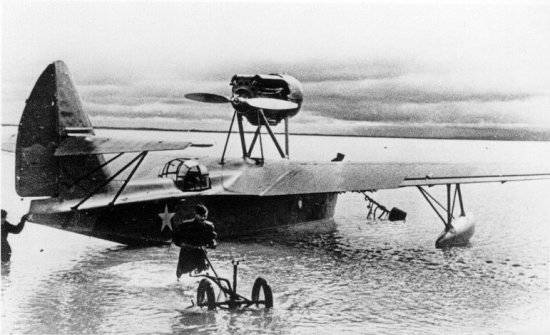
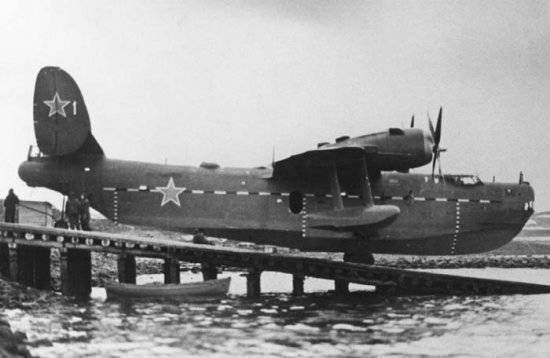
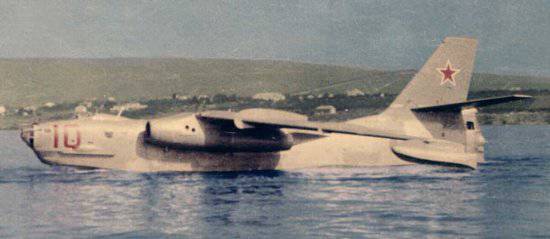
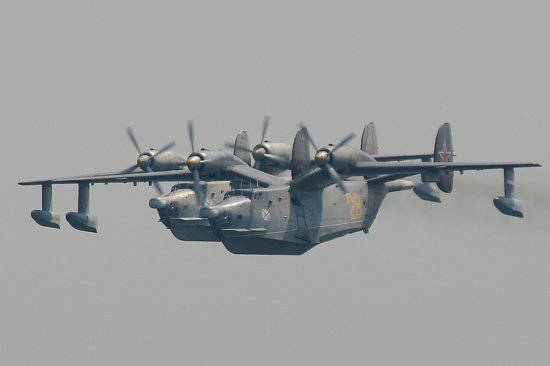
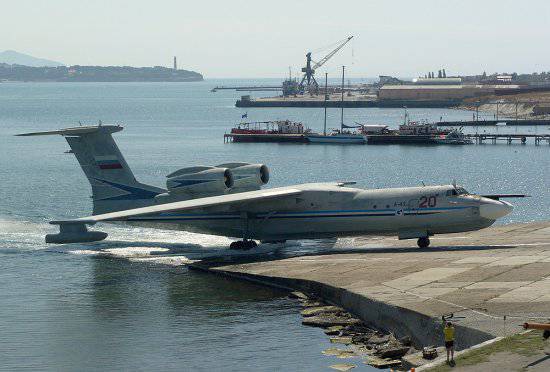
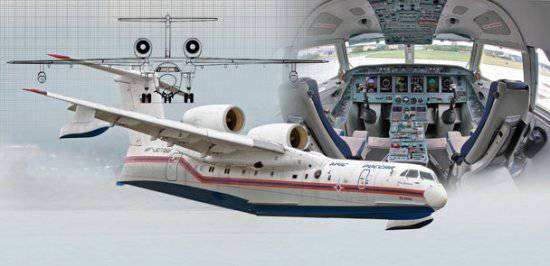
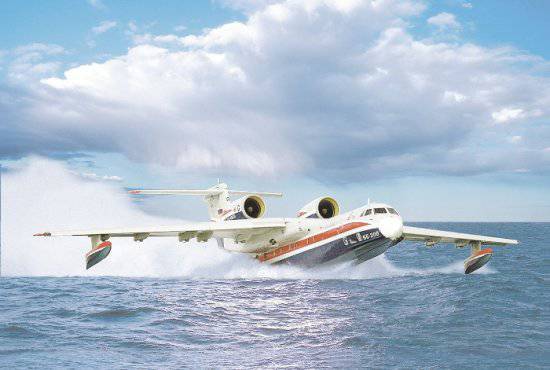
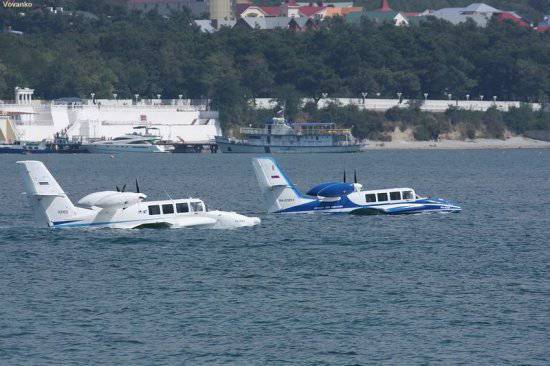
Information